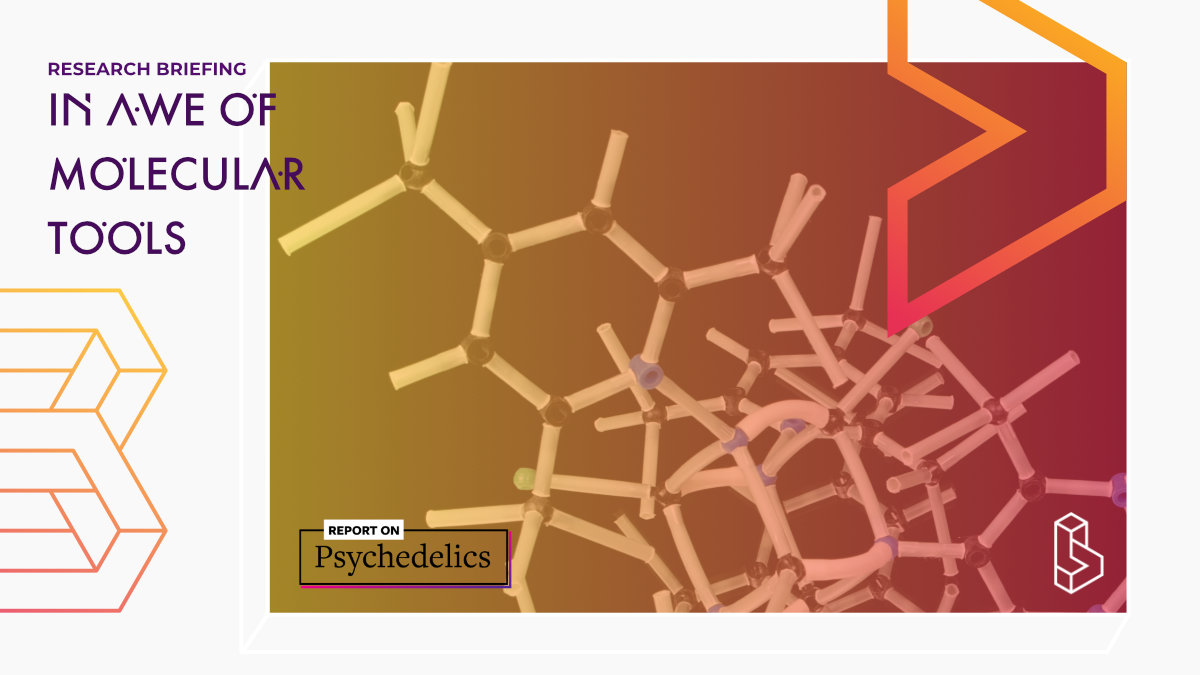This research briefing is co-published with the excellent Report on Psychedelics.
May 6th 2021
In The Research Briefing:
- A new biosensor helps identify which molecules are hallucinogenic
- Microdosing and awe, experiencing the sublime on psilocybin
- Large meta-analysis finds esketamine lowers depression scores
NEUROSCIENCE
A new sensor that lights up when psychedelics attach to neurons
In Monday’s newsletter you got a preview of PsychLight, a sensor that can highlight activity at our psychedelic receptors. A paper in the prestigious Cell describes how the sensor works and how it has already been used to identify promising molecules.
The sensor works by lighting up when psychedelic molecules bind to it. And lighting up is meant literally, the sensor is fluorescent. The structure of the receptor is near-identical to the serotonin (5HT) 2a receptor. This makes it so that psychedelics which usually bind to this receptor, also bind to the sensor. The big difference is that PsychLight, well, lights up green if this happens.
Paper Highlights
- The researchers inserted the sensor in the brains of mice and then gave them a variety of psychedelics, which lit up the sensor.
- But when given ketanserin, something that blocks psychedelics, the sensor didn’t light up, even if psychedelics were given afterwards.
- The research group also tested 34 novel compounds and found that ‘AAZ-A-154’ didn’t light up the sensor, but did show promising neurogenesis and anti-depressant effects.
With the caveat of this study being in mice, this sensor could become a vital tool in the identification of new psychedelics. These can be molecules that can help heal mental health disorders, possibly without the acute trip.
STUDY
Microdosing increases sense of awe
A group of 30 people completed a study on microdosing and perceptions of awe. The participants were given capsules with 0.7g dried truffles (magic mushrooms) that contained 1.5mg of psilocybin. Over the course of three weeks, the participants microdosed and were presented with a few different tests to measure awe whilst microdosing. During the second block of three weeks, they were given a placebo (or the other way around) and tested again.
Anecdotal evidence points towards many benefits of microdosing psychedelics. Yet controlled studies have trouble finding solid effects of microdosing that can’t be attributed to expectation effects. The current study looked specifically at measures of awe, “a feeling of reverential respect mixed with fear or wonder.”
Did they find something?
- Participants scored higher on a rating of awe when presented with awe-inspiring videos.
- But there was no difference between aesthetic feelings when looking at a variety of paintings.
- And, unfortunately for proponents of microdosing, the data showed that two-thirds of the participants guessed correctly which condition they were in (when they received a placebo or microdose).
This study, again, shows that when people are microdosing, there are positive effects. In this particular study, ratings of awe were higher (of videos, not paintings). But the study also shows that the expectation of positive effects could be the explaining factor.
DEPRESSION
Largest analysis of esketamine data finds favorable outcomes
One barrier for the widespread acceptance of psychedelics as medicines is the relatively small size of the current studies. Clinical studies often have no more than 30 participants, although new trials such as the Phase 3 studies by MAPS are changing that.
Ketamine, a dissociative psychedelic, is most probably the one that has been most administrated within a medical setting. Esketamine, also known as Spravato, has been approved by the FDA to help with suicidal thoughts. But does real-world data support this claim.
The current meta-analysis included data on 1488 patients, of which about half had received esketamine and the other half a placebo. All participants in the study were suffering from depression, and a subgroup also had suicidal thoughts.
What we learned
- Esketamine near-immediately relieved depression as measured by a commonly used depression scale (MADRS) two to four hours after administration.
- Although suicidal ideation was lower in the first few hours, there was no difference between the esketamine and placebo group after 24 hours.
- Esketamine led to many ‘adverse events’ such as dissociation, but this was to be expected.
The positive aspect of this study is the large and sustained effect of esketamine on scores of depression. But it fails to show the advertised/approved effect of esketamine on suicidal ideation. Another large meta-analysis compared esketamine to ketamine (esketamine + arketamine) and actually found it to perform worse. And with quite a lot of adverse events (also studied in this paper), one may ask if there are any benefits of esketamine over ketamine.
Research Report Readout
A review of the literature shows that ketamine may work well for bipolar depression. In the study, 61% of those treated with ketamine showed a 50% or more reduction in depression scores.
Ayahuasca may work to treat substance use disorders such as alcoholism. Although there were no control groups in the studies, the results point towards large and positive effects on mental health and other measures.
Two studies investigated the intent and context of the use of ayahuasca. The first investigated intentions of Westerns. The second surveyed nearly 6900 people on why they used ayahuasca and what their outcomes were.
Become a psychedelic insider
Get a Pro Membership to enjoy these benefits & support Blossom📈 full reports on Topics & Compounds
🧵 full summary reviews of research papers
🚀 full access to new articles
See Memberships

